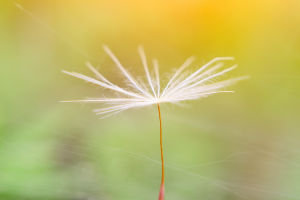Cyclamen, with its delicate petals and vibrant colors, is a beloved flowering plant admired for its beauty and elegance.
However, to ensure successful growth and flourishing blooms, understanding and providing the optimal growing environment for cyclamen is essential.
Cyclamen is native to regions with a Mediterranean climate, characterized by mild, wet winters and dry summers. Therefore, replicating these conditions is crucial for cultivating cyclamen indoors or in gardens.
Firstly, cyclamen thrives in well-draining soil with good aeration. A mixture of peat moss, perlite, and sand provides the ideal medium for cyclamen roots to develop and prevents waterlogging, which can lead to root rot. Additionally, ensuring proper drainage holes in pots or planting beds facilitates excess water removal, preventing soil saturation.
Secondly, cyclamen prefers cool temperatures, ideally between 50-65°F (10-18°C) during the day and slightly cooler at night. Avoid placing cyclamen near heat sources or in direct sunlight, as excessive heat can cause stress and premature wilting. Instead, choose a location with indirect sunlight or partial shade to provide adequate light without overheating the plant.
Cyclamen requires moderate humidity levels to thrive. In dry indoor environments, misting the leaves regularly or placing a humidifier nearby can help maintain optimal humidity levels. However, avoid wetting the flowers and buds to prevent fungal diseases.
Proper watering is crucial for cyclamen's health and growth. Cyclamen prefers consistently moist soil, but overwatering can be detrimental. Water thoroughly when the top inch of soil feels dry to the touch, allowing excess water to drain away. Avoid watering directly onto the corm (bulb-like structure) to prevent rotting.
Fertilizing cyclamen during the growing season can promote healthy foliage and vibrant blooms. Use a balanced, water-soluble fertilizer diluted to half strength every 2-4 weeks during active growth. However, refrain from fertilizing during dormancy periods, typically in summer when cyclamen enters a resting phase.
Proper air circulation is essential for preventing fungal diseases and promoting healthy growth. Avoid overcrowding cyclamen plants and ensure adequate spacing between pots or planting beds. Pruning dead or yellowing leaves also helps improve airflow and reduces the risk of disease spread.
Creating an optimal growing environment for cyclamen involves providing well-draining soil, moderate temperatures, adequate humidity, proper watering, and sufficient air circulation.
By replicating the plant's native Mediterranean climate conditions, cyclamen enthusiasts can enjoy lush foliage and abundant blooms year-round, adding a touch of natural beauty to indoor spaces or garden landscapes.
When it comes to pests and diseases, cyclamen can be susceptible to a few common issues that can hinder its growth. Spider mites and aphids are known to infest cyclamen, particularly in dry and warm conditions. Regularly inspecting the plant for signs of pests and treating infestations promptly with insecticidal soap or neem oil can help prevent damage.
Fungal diseases such as powdery mildew and botrytis can occur, especially in humid environments or when leaves remain wet for prolonged periods. To prevent fungal infections, avoid overhead watering, ensure proper air circulation, and promptly remove any diseased or dead plant material. Applying fungicides preventatively can also help protect cyclamen from fungal diseases.

